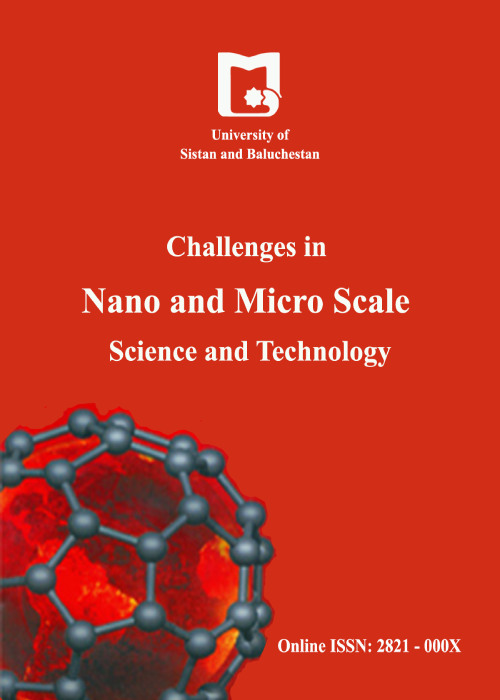فهرست مطالب

Journal of Transport Phenomena in Nano and Micro Scales
Volume:10 Issue: 1, Winter-Spring 2022
- تاریخ انتشار: 1402/02/09
- تعداد عناوین: 3
-
-
Acoustofluidic separation of micro and nanoparticles in Newtonian and non-Newtonian fluids: A reviewPages 1-13
Passive and active separation of microparticles has great importance in biological analysis, diagnostics, chemical processing, etc. Acoustofluidic separation is an active technique employed to isolate or sort micron-sized particles continuously. This technique has lower power consumption compared to other active approaches. Besides, it has good biocompatibility. In this review, recent advances in acoustofluidic particle separation are discussed. Bulk Acoustic Waves (BAWs) and Surface Acoustic Waves (SAWs) are introduced and the effective forces in Newtonian and non-Newtonian fluids are defined. It is revealed that SAW transducers have several advantages for the separation of particles in comparison with BAW ones. This review demonstrates that Polydimethylsiloxane (PDMS) is widely used to fabricate microfluidic devices in which acoustic waves are employed for sorting and manipulating microparticles. Different investigations considered the separation of microparticles by acoustic waves are compared and their characteristics are determined. Besides, the challenges and perspectives of the field are analyzed and discussed.
Keywords: Acoustofluidic separation, Lab-on-chip, Microparticles, Newtonian fluids, Separation efficiency -
Pages 14-20
Due to the extensive development and increasing use of microsystems, it is important to predict the behavior of these structures, especially their vibration behavior. In this study, a micro sensor that has been damaged by a crack is investigated. The damaged micro sensor is modeled as a micro beam with a crack. In this modeling, the crack is modeled as a torsion spring. In the modeling, flexoelectric effect, piezoelectric effect, and electric field caused by the applied voltage have been considered. After mathematical modeling, the governing equations have been extracted using Hamilton's principle based on the modified couple stress theory(MCST). The results of the analytical solution of the equations show that increasing the voltage applied to the micro sensor causes the natural frequency to increase and increasing the piezoelectric constant causes the effective stiffness of the micro structure to increase and as a result the natural frequency increases. Also, the results show that changing the flexoelectric constant in the micro sensor does not significantly change the natural frequency of the system.
Keywords: Flexoelectric, Micro beam, MCST, Crack, Natural frequency -
Pages 21-26
Electroosmotic motion of water and Na, Cl and Mg ions within a silicon nanochannel which is applicable in drug delivery and lab-on-a-chip systems is studied in this article using Molecular Dynamics. How reverse flow takes place in presence of Mg++ has not been thoroughly studied in this field, which is done in this paper. The nanochannel is considered as two parallel surfaces made up of silicon. The ultimate aim here is to evaluate the relation between the electroosmotic flow and channel’s surface charge density. Variations in the velocity profile and ion concentration for different surface charge densities are also demonstrated. In low surface charge densities and within the Debye–Hückel flow regime, any increase in surface charge density contributes to an increase in electroosmotic velocity. Having reached to intermediate flow regime boundaries, the flow loses velocity with more surface charge density. This leads to the point that reverse flow can happen due to extremely high surface charge densities, where more surface charge density means more reversed flow velocity. Furthermore, addition of Mg++ ion to water-NaCl solution results in up to 31 percent increase in average velocity of the electroosmotic motion with fixed charge density.
Keywords: Aqueous solution, Electroosmotic motion, Mg ions, Molecular dynamics simulation, Nanochannel

